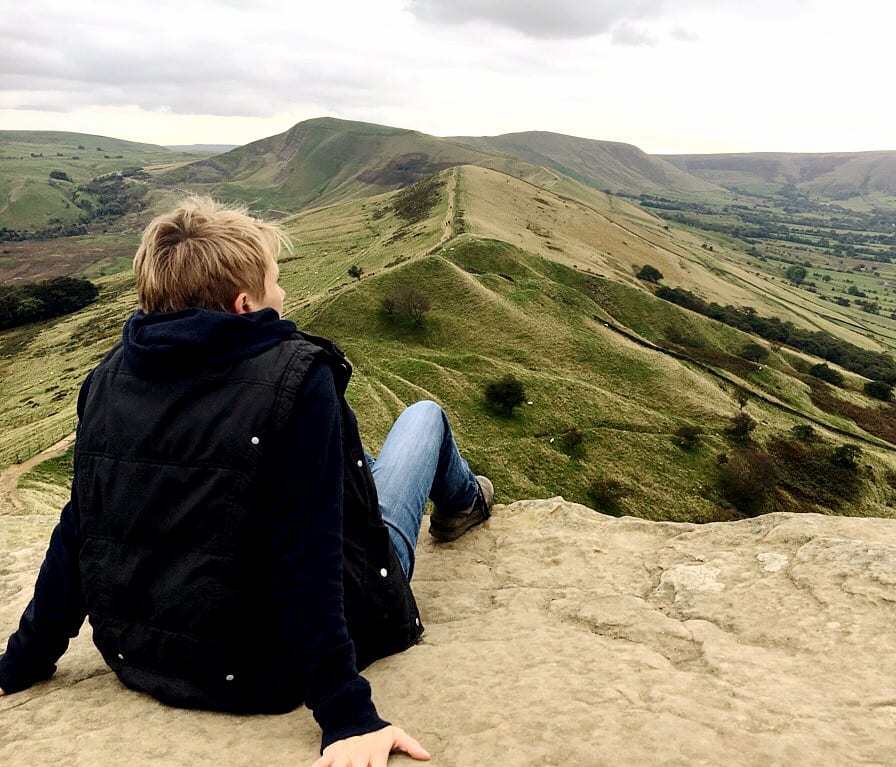The Drowned Villages under Ladybower Reservoir

Many visitors to the Peak District will be familiar with the beautiful Ladybower Reservoir, one of three reservoirs in the Upper Derwent Valley close to Bamford Village.
Ladybower Reservoir is the largest and newest of the reservoirs, the other two being the more remote but equally picturesque Derwent Reservoir and Howden Reservoir. The three reservoirs cover almost 200 square kilometres between them, and have a staggering combined capacity of 464 billion litres of water.
Ladybower Reservoir was built between 1935 and 1943, and it took a further two years to fill. At the time of its construction it was the largest reservoir in Britain.
What many visitors may not realise, however, is that two small but thriving Peak District villages were flooded in the process of building Ladybower Reservoir – the villages of Derwent and Ashopton.
The Villages of Derwent and Ashopton

Derwent had twisting streets of pretty cottages, alongside which the River Derwent flowed under stone bridges. It had a small but tight-knit community, with a number of houses and a school. The village church of St John and St James was built in 1757 and seated 140 parishioners.
The village of Derwent also boasted a graceful country manor house, Derwent Hall. Built in 1672, Derwent Hall was an impressive building. At one point it was owned by the Duke of Norfolk, and stood in magnificent gardens with ornamental trees and a large fishpond.
Ashopton was larger and busier than Derwent, being located on the main road between Sheffield and Glossop, and standing at a crossroads where a journey could be broken. It had a large, bustling coaching inn, The Ashopton Inn, which was just as popular with visiting tourists as it was with local villagers.

Ashopton also had a Post Office and General Store, a Wesleyan Methodist Chapel, a garage and numerous pretty stone houses and farms. Its industry was largely based on farming and an annual wool fair was held in the village every July.
The buildings of Derwent and Ashopton were purchased compulsorily by the Derwent Valley Water Board between 1935 and 1945, despite much local opposition. The villagers were moved on and rehoused close to the village of Bamford, the bodies of their relatives were exhumed from the churchyards, and all the buildings were reduced to rubble.
The church of St John and St James in Derwent held its final service on 17 March 1943. The final service at the Wesleyan Methodist Chapel in Ashopton as held on 25 September 1939, with the last hymn reportedly being ‘The Day’s Dying in the West’. The chapel was demolished in 1943.
The remains of both villages disappeared under the waters as Ladybower Reservoir was filled in 1945. After the demolition of the church of St John and St James in Derwent, its graceful spire was left intact as a memorial to the village. For more than a year the spire rose eerily out of the water, until it too was demolished in 1947.

Not all buildings in Derwent were lost forever. Indeed, a few houses above the water line still survive to this day, including a number of farms. There is still a civil parish of Derwent, although at the 2011 census the village population stood at less than 100.
The beautiful 17th Century packhorse bridge that once spanned the River Derwent close to Derwent Hall also still stands. It was removed stone by stone when the Hall was demolished and rebuilt at the head of Howden Reservoir in 1959, in an area known as Slippery Stones. It is now a Scheduled Ancient Monument.

Reappearing from the Deep
In 2018 the water levels of Ladybower Reservoir fell so low that the ruined village of Derwent could be seen once more, its secret streets re-emerging from a watery silence almost 100 years after it was drowned in the creation of the reservoir.
For more information and a view of the ruined buildings, have a look at our video filmed on location at the time…


